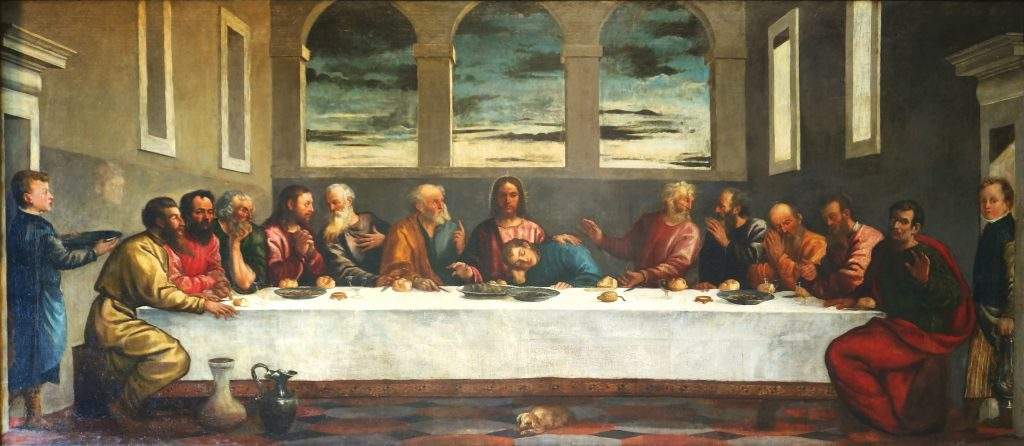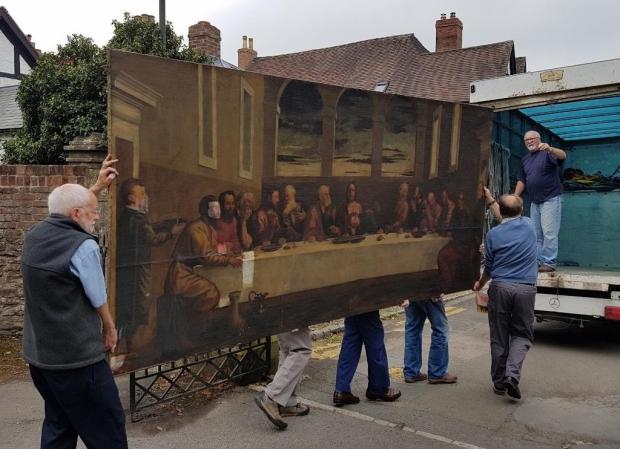An English art historian, Ronald Moore, claims to have found the signature of Titian Vecellio (Pieve di Cadore, c. 1490-Venice, 1576) in a painting, aLast Supper, kept in a small church in the English countryside, in Ledbury, a town of eight thousand inhabitants inHerefordshire, a county in the Midlands bordering Wales. The LastSupper in question was donated to St. Michael’s Church in Ledbury in 1909, by the descendants of an English collector, John Skippe, who allegedly purchased the painting in 1775 from a Venetian family. The painting is in a poor state of preservation, with a restoration work conducted in the 19th century having altered the conditions of legibility. Moore, who studied in Birmingham, Oxford, and Paris and graduated from the Courtauld Institute of Art, by trade is a private consultant for auction houses, private collections, and ecclesiastical and public bodies (he specializes in works damaged by water, fire, and deflagration: to his credit, however, there are no scholarly publications on Titian or the Venetian sixteenth century): he has been studying the Ledbury church work for three years.
Moore, together with his assistant Patricia Kenny, conducted some investigations on the painting, subjecting it also to UV fluorescence analysis, and thanks to this examination he was able to find a small signature (“TITIANUS F.”) painted on the metal jug. The scholar also found a note by Skippe mentioning a Last Supper “by Titian” signed and dated. Of course, it must be premised that the discovery of the signature does not automatically indicate that the author of the painting is Titian: it will have to be verified whether the signature is actually autograph. Moore then believes that he can identify, in the painting, a self-portrait of Titian, a portrait of Tintoretto, as well as portraits of the artist’s sons, Horace and Pomponius. However, the issue is more complex: Moore in fact does not believe that the painting was executed by Titian, although he attributes the composition to him.
 |
| The Ledbury church work |
Prior to the new findings, Moore was convinced that it was a painting by Polidoro da Lanciano (Polidoro de’ Renzi; Lanciano, 1515 - Venice, 1565), who was a collaborator of Titian’s: according to his first hypothesis, Polidoro would have begun it at the end of his career, after which, ill and unable to continue it, he would have Tintoretto, his friend at the time when they both worked in Titian’s studio, help him to complete it. Moore also reports that its attribution to Polidoro da Lanciano had received a favorable reception from Alessandra Zamperini, an expert on 16th-century Venetian painters and professor of modern art history at the University of Verona.
However, the discovery of the signature, as well as the results that emerged from the UV fluorescence investigation (for example, the fact that, according to the scholar, the portrait of one of the apostles could be read as a self-portrait of Titian) and the subsequent restoration that led to the removal of the overlapping layers of varnish, led Ronald Moore to reconsider his ideas. The fact that there are significant quality gaps between different areas of the painting is an indication that several hands worked on it, and according to Moore, it took a rather long time to finish the work (he proposes a date between 1560 and 1580: it would therefore have been finished after Titian’s death). “It is almost certain,” the art historian told CNN, “that this is the only large painting from Titian’s workshop that had remained hidden until now. It took more than two decades to complete and gives us an opportunity to examine the different hands in the artist’s workshop.” According to Moore, the painting was physically executed by “a small group of painters who were capable of working in Titian’s style.” At least five hands would be identified by him, although, the scholar added, “Titian definitely devised the composition, probably together with his son Francis.”
The scientific community at the moment has not yet commented on the statements of Moore, who has, however, announced the publication of a book with all the details of his research.
 |
| The transportation of the painting |
 |
| Art historian says he found Titian's signature on painting in English countryside |
Warning: the translation into English of the original Italian article was created using automatic tools. We undertake to review all articles, but we do not guarantee the total absence of inaccuracies in the translation due to the program. You can find the original by clicking on the ITA button. If you find any mistake,please contact us.